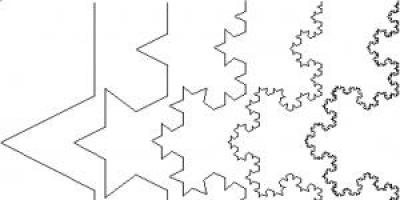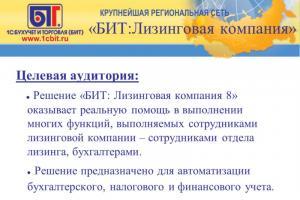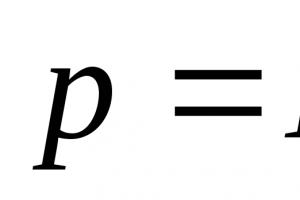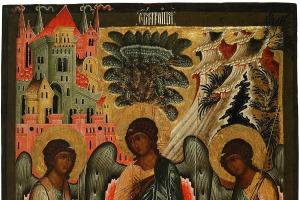Cinquain is a five-line poetic form.
Story
The USA can be considered the birthplace of syncwine at the beginning of the 20th century. It’s surprising that cinquain appeared thanks to Japanese poetry. Later, syncwine was used for didactic purposes. Sinkwine is considered the best way to develop figurative speech in a child, which allows you to get quick results. Many methodologists say that syncwines are useful as tools for synthesizing complex information, as a tool for synthesizing complex information. The history of syncwine At the beginning of the 20th century, an American poetess Adelaide Crapsey developed this form. She loved Japanese tanka and haiku poetry. It was the syncwines that were included in her posthumous collection of poems, published in 1914.
November night
timid, quiet,
like a ghost step, sound -
the frozen leaf is torn away.
Snow
from the bright hills
sigh of the winter wind,
the first scent of pre-winter.
There's snow there!
Types of syncwine
 Like any other poetic work, syncwine has its own rules of composition: It all depends on the type of syncwine.
Like any other poetic work, syncwine has its own rules of composition: It all depends on the type of syncwine.
Traditional cinquain consists of five lines and its syllabic structure is 2-4-6-8-2 and consists of 22 syllables. If we compare with other forms, there are 17 of them in haiku, and 31 in tanka. The authors who proposed this form later developed its variants.
1. Reverse syncwine- syncwine with reverse sequence of verses (2-8-6-4-2);
2. Mirror syncwine- syncwine of two five-line forms, where the first is traditional, and the second is reverse syncwine;
3. Cinquain butterfly is a nine-line form of verse with a syllable structure of 2-4-6-8-2-8-6-4-2;
4. Crown of cinquains- these are 5 traditional syncwines combined into one complete poem.
5. Garland of syncwines- an analogue of the wreath of sonnets, this is the crown of syncwine and the sixth syncwine added to this structure, where the first line is taken from the first syncwine, the second from the second, the last and the last.
Didactic syncwine
This type of syncwine developed within the American school of literature. In this genre, the text is based not on syllabic dependence, but on the content and syntactic specificity of each line.
Synquain structure
 The first line of the syncwine specifies subject, which contains one word. Most often it is a noun or pronoun that denotes the object or subject of the description.
The first line of the syncwine specifies subject, which contains one word. Most often it is a noun or pronoun that denotes the object or subject of the description.
The second line is two words (most often adjectives or participles) - they mean properties of an object or characteristics of a selected object or item given in the first line.
The third line is formed by three verbs, as well as gerunds. She describes the characteristic actions or events, occurring with objects.
The fourth line is a four word phrase expressing author's personal attitude syncwine to the described item or object.
And finally, the fifth line - summary, summary, conclusion. Strict adherence to the rules in syncwine is not necessary. For example, in order for the syncwine to be interesting and complete, in the fourth line you can use three or five words instead of four, and three or two in the fifth line. It is also possible to use other parts of speech.
Sinkwine from a pedagogical point of view
 Writing a syncwine from a pedagogical point of view is free creativity, which requires the author to be able to find the most important and significant points in the information material, and then be sure to summarize. Draw conclusions and summarize everything said above. All this should be briefly formulated. In addition to using tasks for composing syncwines in a literature lesson, syncwines are also used as a final task for the final test of knowledge. Characteristic for syncwine ease of construction. It is precisely the simplicity of its construction that makes it one of the effective methods for the development of a preschool child, which quickly allows you to get results. In particular, becoming familiar with the word itself and expanding your vocabulary to more effectively express your thoughts.
Writing a syncwine from a pedagogical point of view is free creativity, which requires the author to be able to find the most important and significant points in the information material, and then be sure to summarize. Draw conclusions and summarize everything said above. All this should be briefly formulated. In addition to using tasks for composing syncwines in a literature lesson, syncwines are also used as a final task for the final test of knowledge. Characteristic for syncwine ease of construction. It is precisely the simplicity of its construction that makes it one of the effective methods for the development of a preschool child, which quickly allows you to get results. In particular, becoming familiar with the word itself and expanding your vocabulary to more effectively express your thoughts.
Examples of didactic syncwines
Sun
Winter, unfaithful
Hiding, hunting, shooting
And only Man does not see
Autumn
Warm and Soft
Spinning, dancing and laughing
They just sadly shed their leaves
Formation of analytical abilities
 Compiling syncwines helps to form and develop analytical skills. The child develops the ability to analyze. Unlike a school essay, cinquain requires less time, and the effectiveness in the development of many abilities is much higher: intellectual, creative and imaginative. In addition, its framework is more rigid than when writing an essay. From all this we can conclude that the procedure for compiling a syncwine allows you to harmoniously combine elements of all three main educational systems in humans: informational, activity-based, and personality-oriented. Another feature of syncwine is its variability. Various versions of syncwines often contribute to the diversified composition of tasks. Sinkwines can be made by one person or in groups of up to 5 people.
Compiling syncwines helps to form and develop analytical skills. The child develops the ability to analyze. Unlike a school essay, cinquain requires less time, and the effectiveness in the development of many abilities is much higher: intellectual, creative and imaginative. In addition, its framework is more rigid than when writing an essay. From all this we can conclude that the procedure for compiling a syncwine allows you to harmoniously combine elements of all three main educational systems in humans: informational, activity-based, and personality-oriented. Another feature of syncwine is its variability. Various versions of syncwines often contribute to the diversified composition of tasks. Sinkwines can be made by one person or in groups of up to 5 people.
Possible options with:
compiling a short story based on the finished syncwine (using words and phrases included in the syncwine);
correction and improvement of finished syncwine;
analysis of an incomplete syncwine to determine the missing part (for example, a syncwine is given without indicating the topic - without the first line, it is necessary to determine it based on the existing ones).
Cinquain is a unique form of verse that performs not only an aesthetic and creative function, but also a didactic function. Therefore, in the modern educational world there are entire methods that are based on compiling syncwines.
WRITING SINQWAIN
One of the forms of work in literary reading lessons can be working with syncwine.
Sinkwine is a technique for developing critical thinking at the stage of reflection.
The word cinquain comes from the French word for "five".
A cinquain is a poem consisting of 5 lines.
There are several more definitions of syncwine.
Cinquain is a short poetic form used to record emotional assessments, describe one’s current impressions, sensations and associations.
Cinquain is a short literary work characterizing a subject (topic), consisting of five lines, which is written according to a specific plan.
Rules for writing syncwine.
1 line- one word - the title of the poem, theme, usually a noun;
2 line - two adjectives that reveal the theme of syncwine;
3 line - three verbs describing actions on the topic of syncwine;
4 line - a phrase, sentence, quote or catchphrase expressing one’s attitude to the topic;
5 line - a summary word that gives a new interpretation of the topic.
For example, a syncwine on the theme of the Russian folk tale “The Little Fox and the Gray Wolf.”
Fox.
Cunning, smart.
Cries, complains, cheats.
There are such among animals.
A liar.
Sinkwine on the theme of A.S. Pushkin.
Pushkin.
Smart, talented.
Writes, composes, creates.
Poetry outlived him.
Genius.
Sinkwine from the point of view of pedagogy.
Writing a syncwine is a form of free creativity that requires the author to be able to find the most significant elements in information material, draw conclusions and formulate them briefly. In addition to the use of syncwines in literary reading lessons, the use of syncwine is also practiced as a final assignment on the material covered in any other discipline.
Ease of construction.
The simplicity of constructing syncwine makes it one of the effective methods for developing a school-age child, which allows you to quickly get results. In particular, getting to know the very concept of a word and expanding your vocabulary to more effectively express your thoughts.
Formation of analytical abilities.
Compiling a syncwine, a short summary based on large amounts of information, is useful for developing the ability to analyze. Unlike a school essay, a syncwine requires less time, although it has stricter limits on the form of presentation, and its writing requires the compiler to realize almost all of his personal abilities (intellectual, creative, imaginative). Thus, the procedure for compiling a syncwine allows you to harmoniously combine elements of all three educational systems: informational, activity-based and personality-oriented.
You can work with syncwine in different ways.
Variability.
Various options for composing syncwine contribute to the diversified composition of tasks. In addition to compiling a new syncwine independently (or in pairs or in a group), options are possible: compiling a short story based on the finished syncwine (using words and phrases included in the syncwine); correction and improvement of finished syncwine; analysis of an incomplete syncwine to determine the missing part (for example, a syncwine is given without indicating the topic - without the first line, it is necessary to determine it based on the existing ones).
Sinkwine:
Enriches vocabulary;
Prepares for a brief retelling;
Teaches you to form an idea (key phrase);
Allows you to feel like a creator at least for a moment;
It works for everyone.
History of origin
Formation of analytical abilities
Compiling a syncwine, a short summary based on large amounts of information, is useful for developing the ability to analyze. Unlike a school essay, a syncwine requires less time, although it has more rigid boundaries in the form of presentation, and its writing requires the compiler to realize almost all of his personal abilities (intellectual, creative, imaginative). Thus, the procedure for compiling a syncwine allows you to harmoniously combine elements of all three main educational systems: informational, activity-based and personality-oriented.
Variability
Various variations for composing syncwine contribute to the diversified composition of tasks. In addition to independently (as well as in a pair or group) compiling a new syncwine, options are possible with:
- compiling a short story based on the finished syncwine (using words and phrases included in the syncwine);
- correction and improvement of finished syncwine;
- analysis of an incomplete syncwine to determine the missing part (for example, a syncwine is given without indicating the topic - without the first line, it is necessary to determine it based on the existing ones).
Notes
Links
- Examples of syncwines: Exercise “Sinquain - “Tolerance”” and Composing syncwines - in the section of Psychological exercises for training on TrePsy.net.
- Cinquain. (English)
Wikimedia Foundation.
2010.
See what “Sinquain” is in other dictionaries:
This is an article about Japanese poetry, for the operating system see Haiku. It is proposed to rename this page to Haiku (Hokku). Explanation of reasons and discussion on the Wikipedia page: To rename / December 19, 2012. Perhaps its current... ... Wikipedia
This term has other meanings, see Tanka (meanings). Tanka (短歌 tanka?, “short song”) is a 31-syllable, five-line Japanese poetic form (the main type of Japanese feudal lyric poetry), which is a type of ... Wikipedia
Don't know what syncwine is? Then read a brief description of the new methodological technique that teachers are resorting to, find out the most important thing about its features. Learn how to make a syncwine and teach it to your child. This fun and useful activity helps develop children's creativity and observation skills and expands their vocabulary.
What is syncwine and how to make it
A child says that he needs to make a syncwine, but you don’t know what it is? Don't get lost. Simple explanations and descriptions will help you not only understand what a syncwine is, but also help you master the technology of composing them.
What is its essence? Cinquain is akin to a Japanese haiku. This is an unrhymed free poem that consists of five lines. The construction of a syncwine is clearly regulated: each line has its own purpose and form of expression.

Want to know how to make syncwine? To successfully complete the task, remember a simple algorithm for composing texts of this kind:
- Express in the first line topic - indicate the object or person in question. To do this, use a noun.
- Describe the item in the second line: name the two main properties of the object or person being described. Do this using adjectives.
- Specify in the third line three main actions that an object performs or that can be performed with it. Verbs are the best helpers in this case.
- Formulate in the fourth line, what is the unique purpose of the described object or person. You will achieve this goal by constructing a proposal.
- Summarize the above in the fifth line- reveal the essence of the item being described (indicate its species).

Compiling syncwines is a creative and interesting task, which is best used to complete the study of a topic or study of a subject or phenomenon. Children do not just systematize everything they have heard, but draw analogies and try to highlight the most important thing. At the same time, oral and written speech develops, schoolchildren learn new meanings of words, learn to build synonymous series.
Cinquain can be compiled on any topic: geographical discoveries, continents, animals and plants, mathematical concepts, art. With their help, you can describe household items, etc. This is an interesting and exciting activity that children enjoy with a bang. Parents just have to master the basics of syncwine in order to keep their children company and show them an example.
Sinkwine: examples
Do you want to learn how to compose a syncwine? Examples of such works are a visual aid and a guide in completing the task. Look through them and decide on the main parameters of syncwine and how to implement them:
Spring. Warm, bright, sudden Came, awakened, revived Breathed life into nature. Season.

Apple. Red, juicy. They picked it, washed it, ate it. We got a lot of iron. Fruit.
Tulip. Early, bright, fresh. It sprouts, turns green, blooms. The best gift of spring. Flower.

Mathematics. Accurate, important, mandatory. Teaches, develops, counts. Forms the basis of accurate knowledge. School subject.

Friend. Real, loyal, responsive. He will hear, support, help. Will always be there in trouble. Loyalty.
Try to create several of your own versions of syncwine on any topic. For example, invite your child to write a poem as a gift to mom, grandma or dad, to describe natural phenomena (rain, sun) or wild animals (lion, fox, donkey). Practice with your child and see how fun this activity is.
Recently, it has become popular to use a method called “syncwine” in school classes. It is believed that this stimulates the mental activity of students, promotes the development of creative thinking, writing and reading skills, the ability to analyze and draw conclusions, briefly formulating them. In addition, making syncwines is very interesting and children enjoy doing it.
What is syncwine?
This form of versification appeared at the instigation of the American Adelaide Crapsey at the beginning of the last century, thanks to the eastern principles of poetry - haiku and tanka. The result was a cinquain - a laconic five-line poetic form that carries synthesized information. Sinkwine is divided into several varieties, each of which has certain composition rules.
Crapsey came up with the traditional form of composing a pentaline, where the work included 22 syllables and had a structure like this: 2 - 4 - 6 - 8 - 2, where the number indicates the number of syllables in each line.
The didactic form of syncwine began to be used to teach American schoolchildren. It differs from other five-line verses in that it is not the observance of the syllable structure that is important, but the semantic information of the lines.
The classic traditional syncwine is composed as follows:
- The first line is the topic, noun or pronoun;
- The second line is two adjectives or participles, they briefly characterize the topic, describing it;
- The third line is three words of verbs or gerunds that reveal the action;
- The fourth line is the author’s opinion about the topic being described in four words;
- The fifth line is the final line, the essence of the topic, consisting of one word and any part of speech.
Of course, these are the general basics of writing a syncwine that you should try to adhere to. But small adjustments can be made if the meaning of the poem benefits from this. To prevent a five-line text from turning out to be a jumbled collection of words, it is allowed to increase the words in a line or replace parts of speech, and so on. The main thing is that as a result the author creates an interesting creation with important information.
Pedagogical value of syncwine
This poetic form began to be used in Russian schools not so long ago, in the last decade of the last century. But it has been successfully used in Western school curricula for almost 100 years.
From a pedagogical point of view, syncwine is an excellent way for a student to realize his creative potential. This poetic form helps to find and highlight the most important points in the information field, compose them and briefly bring them to the attention of others.
Sinkwine helps overcome speech monotony in a child, helps enrich vocabulary, and accelerate mental development. Compiling pentaverses helps develop analytical thinking skills. It is convenient to use it as a final task to check the material covered. The simplicity of constructing a poem makes this development method very effective for children of different ages.
To take syncwine, you need to have knowledge and understanding of the material covered. This form can be used not only in literature or the Russian language, but also in subjects such as physics, chemistry, biology, you can check the student’s level of knowledge by compiling a syncwine. Moreover, although it takes less time than writing a standard test, it will require no less intensity of mental work. And the result will be much more original, interesting and revealing.
Let's try to understand step by step how to write a non-rhyming poem using the word “book”.
1 line
Line 1 is the topic, which means the word “book” is the finished starting line of our poem. But books are different, what characteristics should we give them? To do this, you need to specify the topic (in this case, the book). Let's move on to the second line.
2 line
Line 2 gives a description of the subject (topic). What do you think of when you hear the word “book”? Everyone has their own associations, for example:
- Electronic, paper;
- Interesting, fascinating, with pictures and illustrations;
- Boring, technical, with formulas and diagrams;
- Old, ancient, with notes in the margins.
The list can be very long and there is no definitely correct definition, since everyone has their own first perception when pronouncing a word. Some people imagine their favorite children’s book, others a hefty tome in their father’s office, others an abstract image in the form of store shelves with many creations. You need to write what you think is related to “your” book. For example:
- bright, colorful;
- boring, instructive;
- historical, interesting.
From the second line the character of our book is already clearly presented.
3 line
Line 3 should describe the action. What actions generally happen with the book? It is composed, written, published, sold, on the shelf, and so on. But it would be more correct to describe the actions in relation to the author: captivates, puts you to sleep, makes you bored, teaches, tells, makes you worry. The choice of characterizing verbs depends on the description given. Let’s say that the boring, moralizing line in the second line cannot captivate or awaken the imagination in the third.
When writing the third line, the main rule is to stick to the image that has already been created. You also need to monitor the use of cognate words; if the book was described as interesting, then you should not characterize the action that interests it. The result will be a transfusion of “water”. It is better to use a word with a similar meaning: an interesting book captivates.
4 line
Line 4 of the pentaverse implies an expression of personal attitude towards the topic (book). As a rule, this line is the most difficult to formulate. Schoolchildren are constantly taught that thoughts must be expressed directly and unambiguously: I love to read, I find books useful and moralizing. In practice, syncwine does not require an assessment and implies a free interpretation. You need to determine what is most important in relation to you and your life related to books.
For example:
- I hate sitting with a book;
- learned to read at age five;
- I have a lot of books at home.
If the imagination pictures deforestation to produce paper for books, then there may be the following formulations:
- published a book - destroyed a tree;
- books made of paper - a planet without trees.
That is, an expression of personal attitude towards books in a clear and understandable form. If it is difficult to immediately compose a short, succinct phrase, then you can write your thought in free form, not counting the number of words, and then decide how to reduce it to the required size. For example: “I love reading historical novels and can sit over a book all night until the morning.” As a result, the shortened version will look like:
- I read all night long;
- I’ll read the whole book before morning;
- a book in your hands - a dream is at your doorstep.
5 line
Line 5 is the final line, its task is to summarize the entire work in one word. First you need to write the resulting four lines and read them. This is an almost ready-made unrhymed poem. Let’s say you remember children’s works:
- Bright, fabulous.
- Entertains, fascinates, lulls.
- Mom read it before bed.
To formulate the main idea of the syncwine, you need to draw a conclusion from the resulting work: “I remember how, as a child, I liked it when my mother read bedtime stories.” Most likely, the final word will already be contained in the final phrase. In this case, the word “childhood” would be appropriate.
Examples of syncwines
Writing syncwines is a creative and exciting process. Children love such activities and often suggest topics for poems themselves. Here are some examples of creating simple unrhymed five-line verses for younger students.
Summer
Warm, sunny.
Swim, relax, walk.
The best time of the year.
Holidays.
War
Cruel, scary.
Kills, tortures, shoots.
I have seen films about the war.
School
Big, noisy.
Teaches, helps, guides.
I like going to class.
Grandmother
Caring, affectionate.
He takes pity, nurses, looks after.
Grandma has the most delicious pies.
Cherry
Fragrant, sweet.
It blooms, smells, ripens.
I love cherry jam.
Firework
Brilliant, colorful.
It shoots, sparkles, roars.
It is a symbol of joy and victory.
Child
Small, defenseless.
Laughs, rejoices, grows.
Children are the flowers of life.
Police
Brave, brave.
Catches, protects, guards.
My city is the safest.
September 1
Festive, elegant.
Let's go, study, get acquainted.
For the first time in first class!
Citizen
Active. Conscious.
Builds, performs, monitors.
Together - we are force.
If you need to compose a syncwine on any topic, but are having difficulty with it, we can help you. Write the topic of syncwine in the comments to the article, and we will try to compile it for you.








